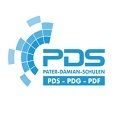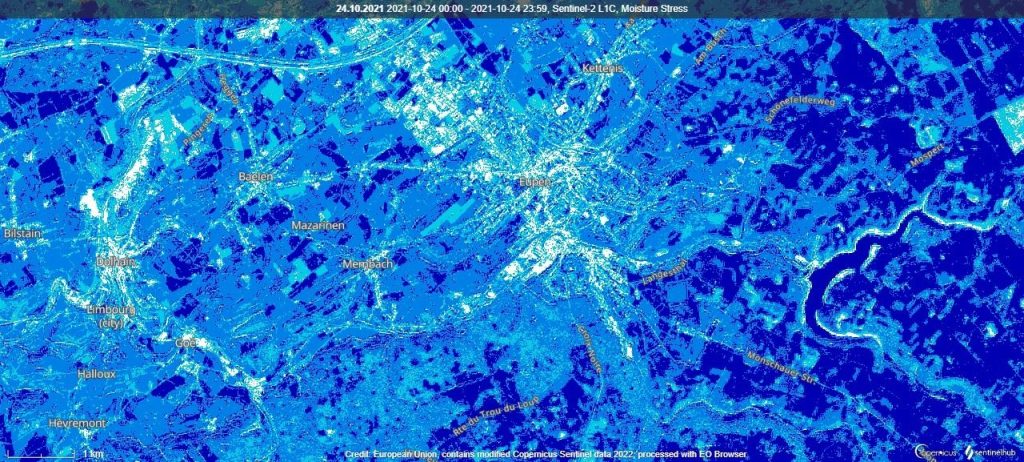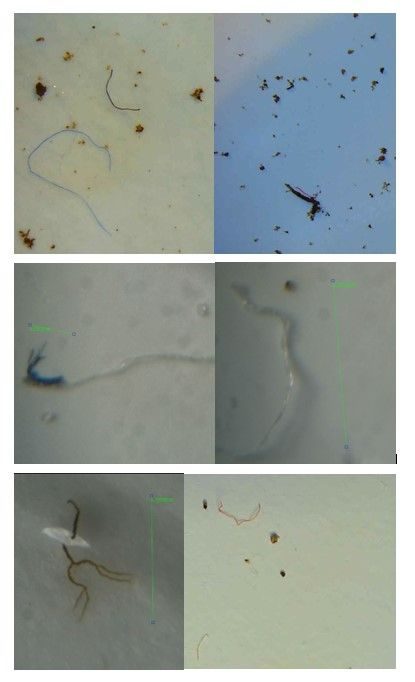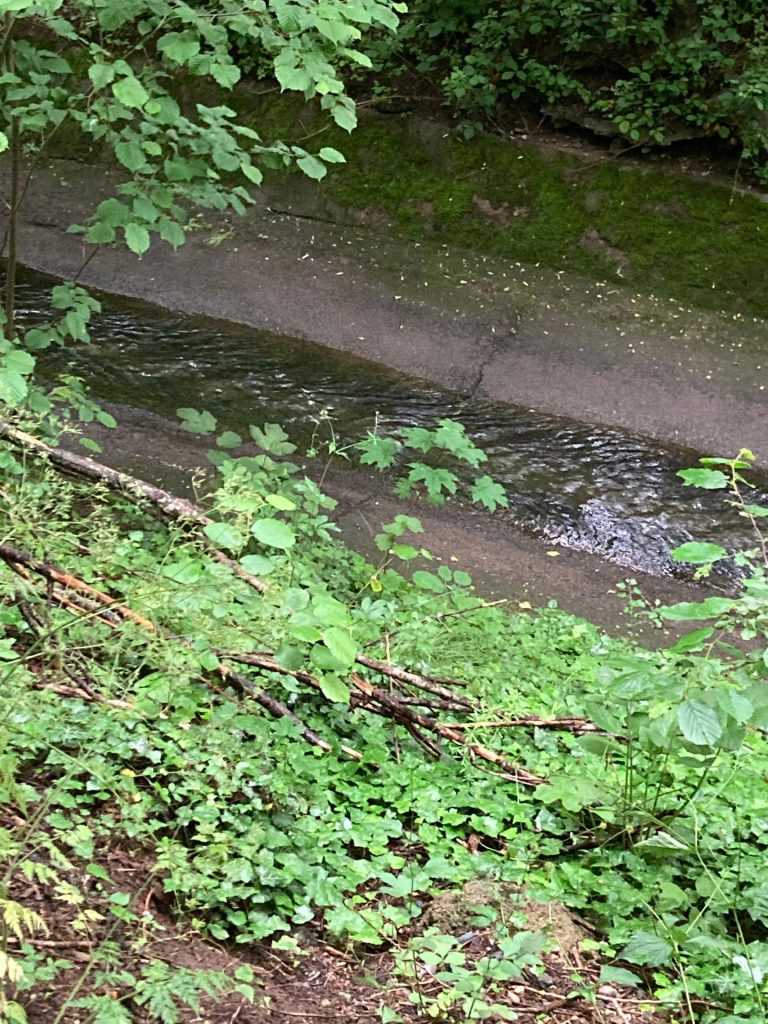Project title: Monitoring of small streams in the region of Eupen
Team: PDS-LEBON-4NAWI6 LPS CD School Award
Pater-Damian-Sekundarschule Eupen Belgium 6 Student’s age: 14-15 years old
What is the impact of flooding on the quality of our surface waters?
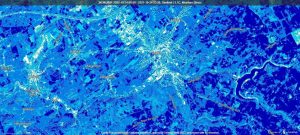
In the project “Climate Detectives”, we have looked at the occurrence of microplastics in our environment.
The aim of our project was to check whether and in what quantity microplastics or microfibres can be found in the surface waters around the Pater Damian school.
For this purpose, we have taken samples from various water sources – streams, ponds and rivers – to determine the amount of microplastics in our inland waters.
We have collected a total of 10 samples of 250 ml each in polyethylene bottles. We have measured the temperature, have recorded the time of collection and the GPS coordinates of the collection site.
In school, the samples have been filtered with Büchner funnels. We have used nylon membrane filters with a porosity of 0.45 micron. In addition, we have used a hand pump to shorten the filtration time.
The samples have been then stored in petri dishes and have been viewed under a light microscope.
Under the microscope, we have observed the samples with a 100x magnification. For this purpose, a camera has been attached to the eyepiece and an image processing program has been used.
Since we also had access to satellite imagery, we have examined satellite images of the extraction sites.
We wanted to find out whether the floods that hit parts of Eupen in the summer of 2021 had an impact on the amount of microplastics in affected waters.
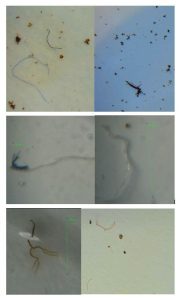
The image processing program has allowed us to measure the size of the microplastic fibres in the analyzed samples. We have resorted to the database from Deakin University in order to distinguish natural fibres from synthetic fibres. Each fibre and particle has been measured individually in the laboratory.
The most interesting results are summarised in figure 2.
Like last year, our results show the presence of cellulose fibres. However, we could not detect a significant increase in these fibres that could be linked to the floods.
Based on the satellite photos, we could not draw any further conclusions.
However, it would be interesting to continue our observations in the coming years. The time factor is certainly an important variable for the presence of microplastics in the water.
This project was a very enriching experience for our class. It allowed us to learn more about water microplastic sampling techniques and how to observe them, but also how to observe satellite photos and analyse their data.

The fight against microplastics is everyone’s business. Their proliferation is due to our frenetic consumption of plastic. Fortunately, it is possible to reduce it by changing our daily habits.
We are aware of this serious climate problem and we want our contribution to be able to inform and educate people.
Some of the actions which we have undertaken or plan to undertake are:
•use recyclable glass bottles instead of plastic bottles
•save water
•adopt the reflex of slipping a shopping bag into our handbag or pocket instead of accepting bio-based or compostable plastic bags. These plastics, which are thought to be biodegradable, actually pollute the environment as much as standard plastic.
•opt as much as possible for bulk, paper or cardboard packaging and reusable tableware. Plastic as packaging or a single-use product, it is only used once before being thrown away.
•drink tap water. It is safe to drink and avoids the countless plastic bottle wastes.
•wear clothes made of cotton and other natural materials instead of synthetics, which means fewer microplastics in the environment.
•reduce, reuse and recycle waste at school and at home.
•we will publish our results on the social networks of our high school.
Projects are created by the teams and they take the full responsibility of the shared data.
← All projects

